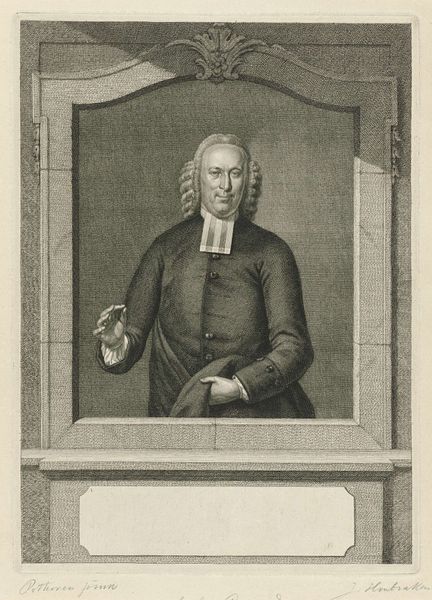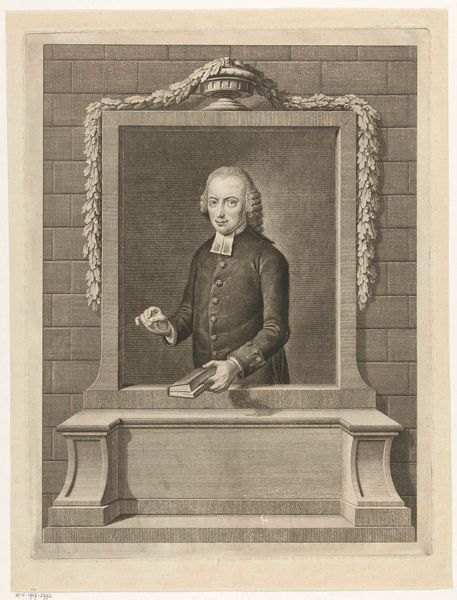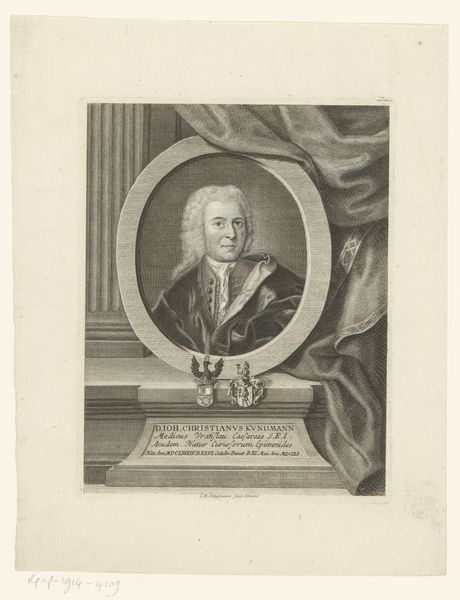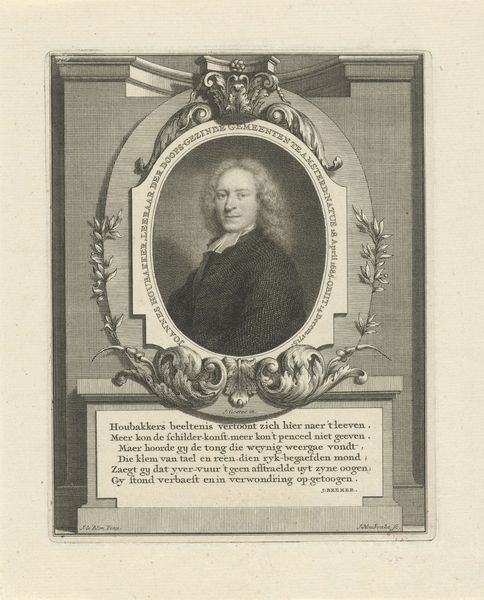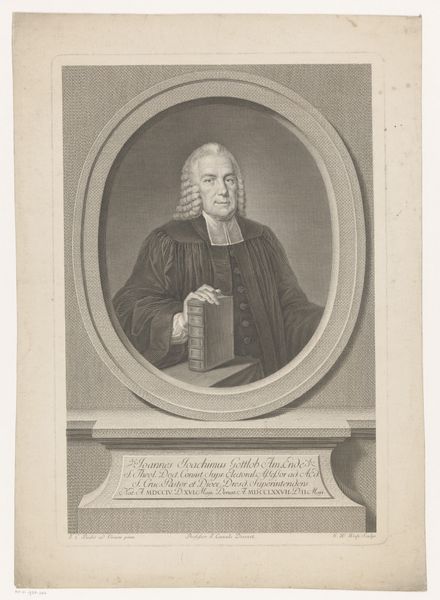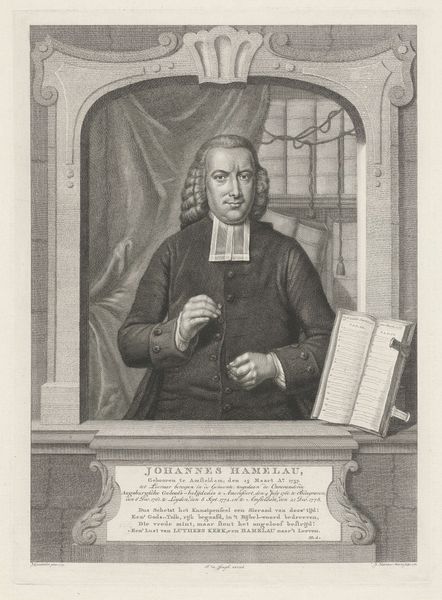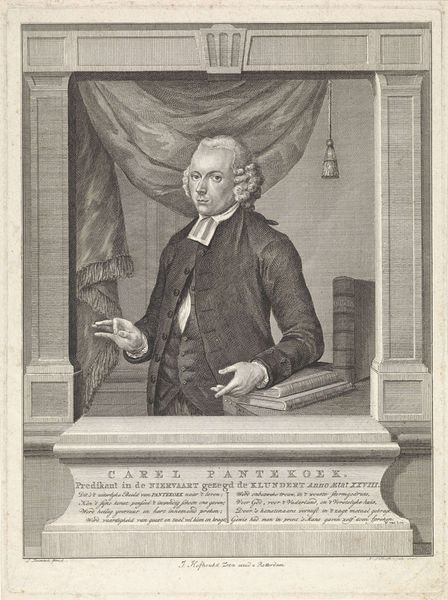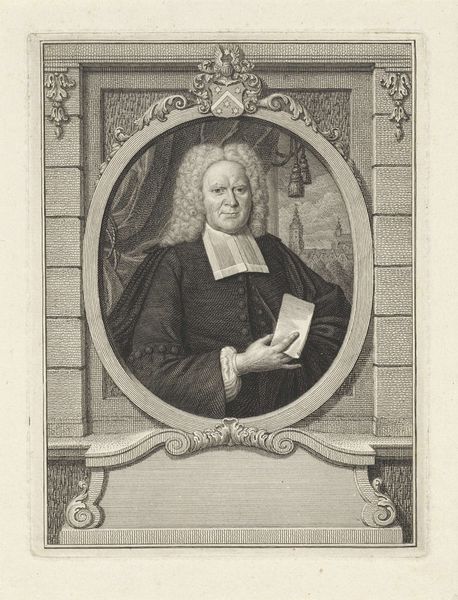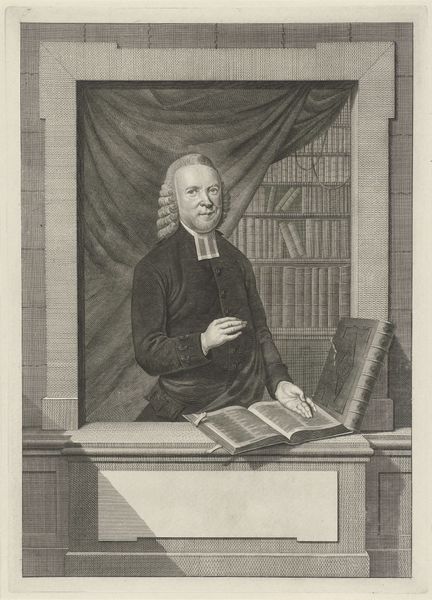
Dimensions: height 355 mm, width 255 mm
Copyright: Rijks Museum: Open Domain
Curator: So, we're standing before a rather striking engraving, a "Portret van Johannes Jacobus Serrurier" created in 1769 by Reinier Vinkeles. Editor: It feels meticulously crafted, almost clinical in its precision. I’m immediately drawn to the details of the drapery on the right side, feels almost velvety. It makes me consider the economic privilege embedded within portraiture of this era. Who had the time, money, and social standing to warrant such a careful and laborious rendering? Curator: Good eye, there is much labor evident here. Vinkeles wasn’t just casually sketching; engraving demands intense focus. You have to etch away at a metal plate, and I think in this piece, you feel that focused labor invested in depicting this individual. Editor: Absolutely! Look closely and the image is not solely lines on a page; instead the artisan's tools create tone and texture, depth. Did Vinkeles use different kinds of burins, or perhaps explore multiple bites to obtain such dark tones? These techniques require real knowledge, and also access to high quality tools. Curator: What interests me most is the story told. He stands there in the attire of his station and he gestures as if addressing a crowd, though I think the real narrative exists around him—namely the stone, classical forms behind him with the cherubic figure staring, holding his staff, which really begs a lot of questions. Is this meant to symbolize the church’s enduring truth and history? Editor: Possibly. That figure appears like an idealized allegory of divine truth, so it invites contemplation about art's use for power— how printing itself aided religion to build their world views through imagery, using artists like Vinkeles to promote the status quo through controlled artistic forms, I see it even in the placement and arrangement of the typeface. Curator: I hadn’t thought about it in those terms precisely, though now it all rings differently in my mind— the subject, composition, medium itself! Editor: Exactly. By concentrating on things like materials and who controlled them we discover all these new ways to approach an artwork beyond mere artistic interpretation!
Comments
No comments
Be the first to comment and join the conversation on the ultimate creative platform.

